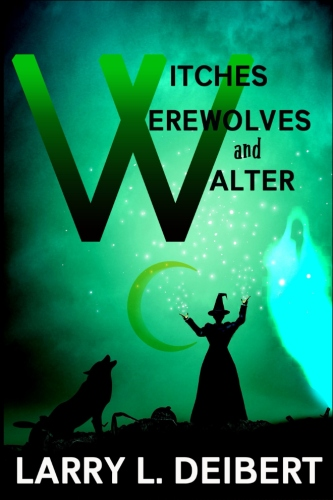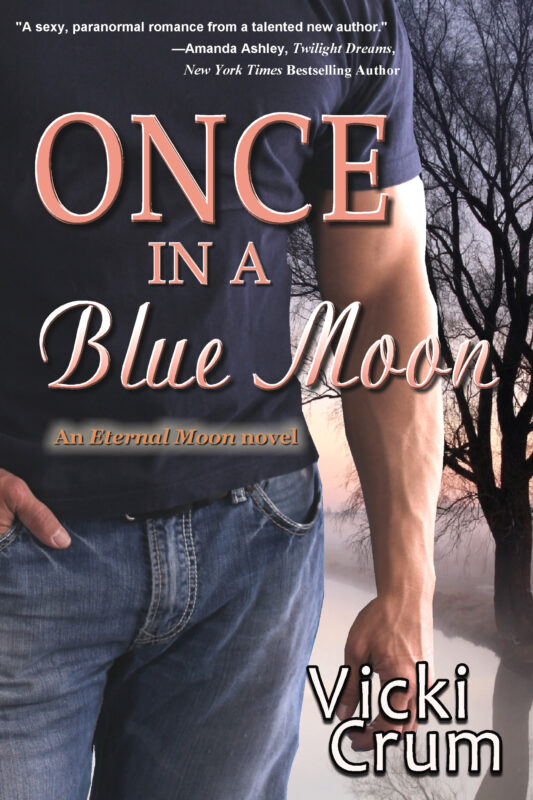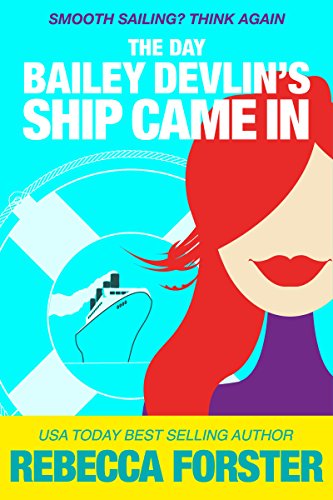I wouldn’t want to do the wrong thing…
April 10, 2019 by Tari Jewett in category Charmed Writer by Tari Lynn Jewett tagged as characters, critique, Writing conference
I’m kind of awkward, sometimes talk too much, sometimes don’t talk at all, often wish I hadn’t spoken when I do, and also talk and write in run on sentences!
I’m a writer.
I’m also kind of emotional, ask anyone who knows me, they’ll tell you, I’m not afraid to scream with excitement, cry when I’m hurt, or even with joy. I’m not afraid to feel, orshare my feelings, sometimes I’m too open with how I feel…however, when it’s something big…something I haven’t experienced before…something for which there’s no training, I freeze. I don’t react. I hold back, waiting for instructions, waiting for someone to tell me what the right thing is to do. Because, I wouldn’t want to do the wrong thing.
So, when my editor told me I needed more emotional description, I was surprised, everyone knows how I feel, and surely everyone could see how my characters felt. Right?
But I worked on it, I fixed it…I thought. Then, this weekend, at the California Writer’s Conference, during a critique with author, Barbara Ankrum, I had to do some self-reflection after I was told that she could see how my other characters felt, but not how the main character was feeling…and as we all know, our characters, especially main characters, while fictional, have elements of the author in them. So why am I not getting her feelings across?
Why, when Violet, who always does the right thing, is confronted with the unimaginable, am I unable to show how she’s feeling? Why can’t I get her emotions on the page. And then I realized what it was. Violet behaved exactly as I did, she froze, she didn’t know how she was allowed to react, she didn’t know how she was supposed to feel. And confrontation is ugly, dirty, and might mess up her hair.
Now some of that might surprise those who know me because, well, I’m not an ‘every hair in place’ kind of girl. I’d like to be, but even in the 80’s with my hair shellacked with Final Net, I didn’t have every hair in place, but inside I feel like I’m supposed to. Inside I know that every hair should be in place, the bed should be made, and no dishes should be left in the sink.
And then I realized something that I hadn’t realized before. I’d actually been in some of the situations that Violet was in…not exactly, of course, again this is fiction, but similar, and in writing Violet, as in real life, I shut down. I froze, I couldn’t share exactly what she felt, I held back, she held back waiting for instructions.
Again, Violet isn’t me. She’s an oil heiress and former Rose Queen in 1928, a fictional character, real only on the pages of my manuscript. But it’s my job, to bring her to life, to help readers to feel what Violet feels, and see things through her eyes.
So I’m back to work. I don’t have to change Violet, her reactions are real, I have to help the reader to understand how she feels. Now, thanks to Barbara, I have instructions, I believe I know what to do, but ultimately, you’ll have to decide.
Which authors make you experience the characters feelings? Who brings their heroines/heroes to life for you? I’d love to know!
1 0 Read moreA Fleshy Toggle Switch? by Diane Sismour
January 17, 2018 by marianne h donley in category Apples & Oranges by Marianne H. Donley, Guest Posts tagged as characters, creativity, Diane Sismour, Guest posts
Sometimes I wish for a fleshy toggle switch just to concentrate. A switch to turn on the, “What ifs,” or off to allow me to listen to a conversation without having a character make a sidebar comment, with a dimmer to shut out the annoying static from everyday life. On the other hand, where would a writer be without those voices banging around, attempting to push a story out of them?
Most writers I know have characters talking to them. Not just giving an occasional shout, but full arguments that can shove a manuscript into unplotted waters. What would happen if they went silent? I shudder the thought.
My characters made themselves present in those geeky years attending a new high school, trying to fit into any group, but not. Of course, telling anyone about them could have brought dire consequences. Someone would have had me committed to a padded cell on the sunny side of a psych ward, so the thoughts went into a journal. The voices got louder, I listened, my writing voice strengthened, and those ideas became plots.
From where did these constant distractions come, and why me? Isn’t there enough going on in my life for one of me knocking around in my mind? Oh my gosh…my characters just gasped collectively.
I smile before giving a mental nudge. “Hey, just kidding guys.”
Although I still wish for a fleshy toggle switch, I cannot imagine a life without writing or my constant companions pushing my boundaries by asking, “What if.”
Have a creative New Year, and as always, Happy Writing,
Diane

Diane Sismour has written poetry and fiction for over 35 years in multiple genres. She lives with her husband in eastern Pennsylvania at the foothills of the Blue Mountains. Diane is a member of Romance Writers of America, Bethlehem Writer’s Group LLC, Horror Writers Association, and Liberty States Fiction Writers. She enjoys interviewing other authors and leading writer’s workshops.
Her website is www.dianesismour.com, and her blog is www.dianesismour.blogspot.com.
You can find her on Facebook and Twitter at: http://facebook.com/dianesismour, http://facebook.com/networkforthearts, and https://twitter.com/dianesismour.
The Character Must Die
July 22, 2017 by Veronica Jorge in category Write From the Heart by Veronica Jorge tagged as characters, letting go, Veronica Jorge, writing I killed one of the characters in my novel.
I killed one of the characters in my novel.
(It was more like two, but I have no qualms about the second one.)
I came up with a death scene I really liked and just had to use it, so someone had to “go.”
I’m still not sure if it was in the best interest of the story, or if I’m just stuck on having to use a particular description.
As I reflect on the sequence of events and the wording, and debate the character’s fate; to live or not to live? I think about language in general and the nuances contained therein.
The English “goodbye”, like the characters in a book, can be so finite. Here today, gone tomorrow.
In contrast, parting words in other languages encompass a world of possibilities of that which is yet to be experienced. Whether it’s, auf wiedersehen in German, arrivederci in Italian, or hasta luego in Spanish, each expresses the probability, and the hope, that we will meet again. Even the Japanese rarely use sayonara, unless it really is “the end.”
 In life, as in writing and in reading, I prefer the meanings that other languages provide for that interim we call separation. And I would like to think that the characters we create in our imaginations, that eventually inhabit the pages of a book, continue on, not only in our own minds, but in the minds, and perhaps the hearts, of our readers.
In life, as in writing and in reading, I prefer the meanings that other languages provide for that interim we call separation. And I would like to think that the characters we create in our imaginations, that eventually inhabit the pages of a book, continue on, not only in our own minds, but in the minds, and perhaps the hearts, of our readers.
So, if I must terminate one of my characters, I’ll think of them as an old soldier who has faithfully served, and comfort myself with the words of General Douglas MacArthur.
“Old soldiers never die, they just fade away.”
And I realize that no matter how wonderful a story may be, as we grow and change, some of the characters we loved best as writers and readers do fade away and/or are replaced by others.
But, they never really die.
We meet them over and over again in the ways they have touched us and changed us, and have made us different and maybe, even better, for having met them.
See you next time on August 22nd.
 Veronica Jorge
Veronica Jorge
Manager, Educator, and former High School Social Studies teacher, Veronica credits her love of history to the potpourri of cultures that make up her own life and to her upbringing in diverse Brooklyn, New York. Her genres of choice are Historical Fiction where she always makes new discoveries and Children’s Picture Books because there are so many wonderful worlds yet to be imagined and visited. She currently resides in Macungie, PA.
2 0 Read moreOn Writing…The Parts of the Whole
May 19, 2017 by Jenny Jensen in category On writing . . . by Jenny Jensen tagged as characters, Secondary Characters, writingCHARACTERS – the stars and the extras

A good story is made up from a host of elements that when jumbled together and skillfully molded become a glorious whole – just like Dixie Jewett’s fabulous horse. Plot, setting, theme, writing style and characters all must blend to make the whole pleasing. Being an omnivorous reader (yes, even when I’m not editing) I am happy with a plot driven or an action driven story, but I am smitten by a character driven tale. Reading a character driven novel is like crashing a party and making the acquaintance of new and fascinating people.
Main Characters
The main characters always have some attraction otherwise they wouldn’t support the story and make the reader care. Who couldn’t be enthralled by bossy Elizabeth Bennet and the steely D’Arcy, or Scarlett and Rhett? And then there’s Hannibal Lector, the very pinnacle of evil yet more compelling than a ten-ton magnet. Depending on how the story is structured we can learn their history upfront, or it is revealed through out the narrative, but there is always enough time and story space to make that all-important emotional connection through, not just history, but mannerisms, speech patterns, and motivations.
Secondary Characters
It is the secondary characters – the extras, if you will – that are often the most colorful component of great novels. Dickens’ genteelly mad Miss Haversham, du Mauier’s chilling Mrs. Danvers. Creating a supporting cast that adds a glint of darkness, a spark of humor or a touch of humanity to a story. Beyond helping to create a personality in a novel, this supporting cast is also critical to fleshing out the setting – you know you’re in NYC when your hero is depressed and seeks the ever freely given advice of street smart Dominick De Luca at his World Famous Hotdog cart. You feel you’re in San Francisco when the hero hears the Powell Street cable car and hops on to her morning repartee with Phillip the droll veteran conductor.
Secondary characters can be tools to move the action forward. If your protagonist needs to be placed in a situation that is out of character for her, use a secondary character to get her there. For instance, the contrary but kind old Mr. Kronke is Mia’s downstairs neighbor to whom she can never say no. Too ill to act on his passion for the horses Mia agrees to deliver his bet to the shady off license where she stumbles into a handsome man and so meets the hero.
Supporting Characters
Finally, supporting characters make great sounding boards to help the main characters work out internal conflict. Think about the key role lively dialog with the saucy office receptionist might play, or a hip bartender. Dithering Aunt Renada, for instance, is far more compelling than your main character’s long internal dialogue.
Just remember that you, the author, are creating a whole world and you must populate it. Your cast of characters can be useful, colorful, thoughtful, wicked, wise or witty but they should never be boring. Look at the world around you, note all the people you come in contact with, and you will have all the inspiration you need to create fantastic and memorable characters.
Jenny
 About Jenny Jensen
About Jenny Jensen
With a BA in Anthropology and English I pursued a career in advertising and writing and segued into developmental editing. It was a great choice for me. I love the process of creating and am privileged to be part of that process for so many great voices — voices both seasoned and new.
I’ve worked on nearly 400 books over 20 years, books by noted authors published by New York houses including Penguin, Kensington, Pentacle and Zebra as well as with Indie bestsellers and Amazon dynamos. From Air Force manuals and marketing materials to memoirs, thrillers, sci fi and romance, my services range from copyediting to developmental coaching.
Having worked in advertising and marketing, I am always cognizant of the marketplace in which the author’s work will be seen. I coach for content and style with that knowledge in mind in order to maximize sales and/or educational potential. My objective is to help the author’s material stand out from an ever more crowded and competitive field.
10 0 Read moreMEET MY CHARACTERS
June 7, 2015 by Tracy Reed in category Pink Pad by Tracy Reed tagged as blog tours, characters, Generational Curse, Tracy ReedTracy Reed
I have been on a blog tour for the past few weeks, which has been great. It’s given me a chance to chat with readers from all over. I can say that because, I know one of the blog stops was based in the United Kingdom and another was based in Australia. I’ve officially gone international. YEAH!
There are a lot of things I like about blog tours…I’ll expound more once it’s over. One of the things I like is it forced me to really get to know my book. I know that sounds strange seeing I wrote the story, but there were a lot of things I had forgotten about their back story and personality. We talk a lot about building or developing characters at RWA and this was very helpful.
I am the first to admit, I am a novice when it come to writer lingo or jargon…protagonist, story arch, subplot, syntax, deep point of view, conflict. antagonist, alliteration. And don’t get me started on length…short story, novelette , novella, full length, jumbo or super length. I may not explain it in correct author terms, but I get by. However, there’s one thing I know for sure, I read what I like and write what I like.
So when I decided to do the blog tour, I was asked to do a character interview. What the crap. I had no clue what that was. I’m not a stupid woman. I graduated college with honors. I had my own sports segment on my college television station for a year, which also aired on local cable. I interned in the Sports Department at the local NBC Station in Tulsa for a year. I worked in Public Relations and the music industry. Plus I run my own business, but this stumped me. When the blog tour promoter answered my simple question, another, “What the crap!†popped into my head. How was I going to interview these two people without giving the story away. Oh yeah, and I had to provide the questions.
I thought long and hard about this and once I started writing, it just flowed. This was my favorite type of interview to do during the tour. I’m already kicking around possible questions for characters from my next books. A good thing about this type of interview/post, is it makes the characters seem real, which helps tell the story.
Here’s my post from a couple of days ago that first appeared on Writer In Progress Blog [www.writerip.blogspot.com].
Meet GENERATIONAL CURSE’s Kyla James and Sean Prescott
GENERATIONAL CURSE is set in New York. However, there are a few things about Sean and Kyla you might find interesting. So let’s ask them.
Where do you live?
KYLA: Upper East Side
SEAN: Tribeca
Tell us about your family? Any sisters and/or brothers?
KYLA: I grew up in a traditional home. My father’s a doctor and my mother is his support. I have a younger sister, who’s also married to a doctor. All of them live in the suburbs.
SEAN: I grew up in a traditional situation. My dad is in construction and my mother worked in his office until a few years ago. They live in the suburbs. My older brother is married and is heart surgeon. He and his family live in California.
What do you do for a living?KYLA: I’m an Interior Designer
SEAN: I’m a Furniture Designer
Where do you work?
KYLA: All over Manhattan, the Hamptons and a few projects in Florida and Chicago
SEAN: My showroom is in Tribeca. However, I do custom work for clients all over the world.
How did you meet?
KYLA: I was leaving an appointment and walked passed his showroom and a chair in the window caught my eye.
SEAN: That’s not how we met. I was doing a showing in Charlotte and she came in.
KYLA: I don’t remember that.
SEAN: She walked in and started stroking all of the sofas and taking pictures. Then she asked if I shipped to New York. I said yes and gave her my card.
KYLA: Oh yeah. Now I remember. Because when he turned around and I saw his behind, I forgot about everything that happened beforehand.
SEAN: Really?
KYLA: Shut up. Next question.
Is that how you started working together?
KYLA: No. I think it was at least what, a year later?
SEAN: About six months. That’s when she walked into my showroom.
KYLA: That’s right, now I remember. It was the chair. I knew it looked familiar. I went inside and I was surprised to see him. We started talking and…
What about the chair?
KYLA: I ordered it for my client.
SEAN: Then she came back the following month for another client and we’ve been working on projects ever since.
So when did you start going out?
KYLA: Who said we were going out?
SEAN: We’re just friends.
Really, you seem very comfortable with each other.? [They’re both smiling]
KYLA: Uhm…I’m in a relationship right now. Besides, I don’t like to mix pleasure with business.
SEAN: So am I pleasure or business?
KYLA: Next question
Have you ever been in love? Engaged? Married?
KYLA: No. No. No.
SEAN: Yes. Yes. No.
What happened Sean?
SEAN: Next question
Tell us something the other doesn’t know about you:
KYLA: Sean’s my best friend.
SEAN: I’m in love with her.
Have you ever considered being more than friends?
KYLA: Uhm…I thought we covered this?
SEAN: Yes.
KYLA: Really?
SEAN: Yes.
Okay, here’s the lightening round.
Print or ebook?
KYLA: Both
SEAN: Both
CD, vinyl or iPod??
KYLA: Yes, no, yes
SEAN: All three
Movies: Chick flick, action, suspense, documentaries?
KYLA: All four
SEAN: All four
KYLA: Really, you like chick flicks
SEAN: Next questions
Jazz, Hip Hop or old school R&B?
KYLA: Jazz and old school
SEAN: All three
Favorite comfort food?
KYLA: Fried chicken
SEAN: Mac and Cheese
Favorite pizza topping?
KYLA: Mushrooms, sausage and extra cheese
SEAN: Pepperoni, sausage and extra cheese is a must
How do you take your coffee?
KYLA: Black
SEAN: Black
Favorite desset?
KYLA: Sugar cookies
SEAN: Gelato
Dog person or cat person?
KYLA: Dog
SEAN: Dog
City or Suburbs:
KYLA: City
SEAN: City
Taxi or Subway:
KYLA: Taxi and foot
SEAN: Taxi or foot, sometimes the subway or I drive
Will you ever get married?
KYLA: Next question
SEAN: Yes
Available at
Amazon.com
Affiliate Links
A Slice of Orange is an affiliate with some of the booksellers listed on this website, including Barnes & Nobel, Books A Million, iBooks, Kobo, and Smashwords. This means A Slice of Orange may earn a small advertising fee from sales made through the links used on this website. There are reminders of these affiliate links on the pages for individual books.
Search A Slice of Orange
Find a Column
Archives
Featured Books
THE GOOD GIRL PART DEUX
Can you really have the fairy tale and the dream job?
More info →THE DAY BAILEY DEVLIN’S SHIP CAME IN
Oh, Boy! Oh, Bailey!
Just when you think it's going to be smooth sailing, Venus messes with your rudder.
Newsletter
Contributing Authors
Search A Slice of Orange
Find a Column
Archives
Authors in the Bookstore
- A. E. Decker
- A. J. Scudiere
- A.J. Sidransky
- A.M. Roark
- Abby Collette
- Alanna Lucus
- Albert Marrin
- Alice Duncan
- Alina K. Field
- Alison Green Myers
- Andi Lawrencovna
- Andrew C Raiford
- Angela Pryce
- Aviva Vaughn
- Barbara Ankrum
- Bethlehem Writers Group, LLC
- Carol L. Wright
- Celeste Barclay
- Christina Alexandra
- Christopher D. Ochs
- Claire Davon
- Claire Naden
- Courtnee Turner Hoyle
- Courtney Annicchiarico
- D. Lieber
- Daniel V. Meier Jr.
- Debra Dixon
- Debra H. Goldstein
- Debra Holland
- Dee Ann Palmer
- Denise M. Colby
- Diane Benefiel
- Diane Sismour
- Dianna Sinovic
- DT Krippene
- E.B. Dawson
- Emilie Dallaire
- Emily Brightwell
- Emily PW Murphy
- Fae Rowen
- Faith L. Justice
- Frances Amati
- Geralyn Corcillo
- Glynnis Campbell
- Greg Jolley
- H. O. Charles
- Jaclyn Roché
- Jacqueline Diamond
- Janet Lynn and Will Zeilinger
- Jaya Mehta
- Jeannine Atkins
- Jeff Baird
- Jenna Barwin
- Jenne Kern
- Jennifer D. Bokal
- Jennifer Lyon
- Jerome W. McFadden
- Jill Piscitello
- Jina Bacarr
- Jo A. Hiestand
- Jodi Bogert
- Jolina Petersheim
- Jonathan Maberry
- Joy Allyson
- Judy Duarte
- Justin Murphy
- Justine Davis
- Kat Martin
- Kidd Wadsworth
- Kitty Bucholtz
- Kristy Tate
- Larry Deibert
- Larry Hamilton
- Laura Drake
- Laurie Stevens
- Leslie Knowles
- Li-Ying Lundquist
- Linda Carroll-Bradd
- Linda Lappin
- Linda McLaughlin
- Linda O. Johnston
- Lisa Preston
- Lolo Paige
- Loran Holt
- Lynette M. Burrows
- Lyssa Kay Adams
- Madeline Ash
- Margarita Engle
- Marguerite Quantaine
- Marianne H. Donley
- Mary Castillo
- Maureen Klovers
- Megan Haskell
- Melanie Waterbury
- Melisa Rivero
- Melissa Chambers
- Melodie Winawer
- Meriam Wilhelm
- Mikel J. Wilson
- Mindy Neff
- Monica McCabe
- Nancy Brashear
- Neetu Malik
- Nikki Prince
- Once Upon Anthologies
- Paula Gail Benson
- Penny Reid
- Peter J Barbour
- Priscilla Oliveras
- R. H. Kohno
- Rachel Hailey
- Ralph Hieb
- Ramcy Diek
- Ransom Stephens
- Rebecca Forster
- Renae Wrich
- Roxy Matthews
- Ryder Hunte Clancy
- Sally Paradysz
- Sheila Colón-Bagley
- Simone de Muñoz
- Sophie Barnes
- Susan Kaye Quinn
- Susan Lynn Meyer
- Susan Squires
- T. D. Fox
- Tara C. Allred
- Tara Lain
- Tari Lynn Jewett
- Terri Osburn
- Tracy Reed
- Vera Jane Cook
- Vicki Crum
- Writing Something Romantic
Affiliate Links
A Slice of Orange is an affiliate with some of the booksellers listed on this website, including Barnes & Nobel, Books A Million, iBooks, Kobo, and Smashwords. This means A Slice of Orange may earn a small advertising fee from sales made through the links used on this website. There are reminders of these affiliate links on the pages for individual books.


























































